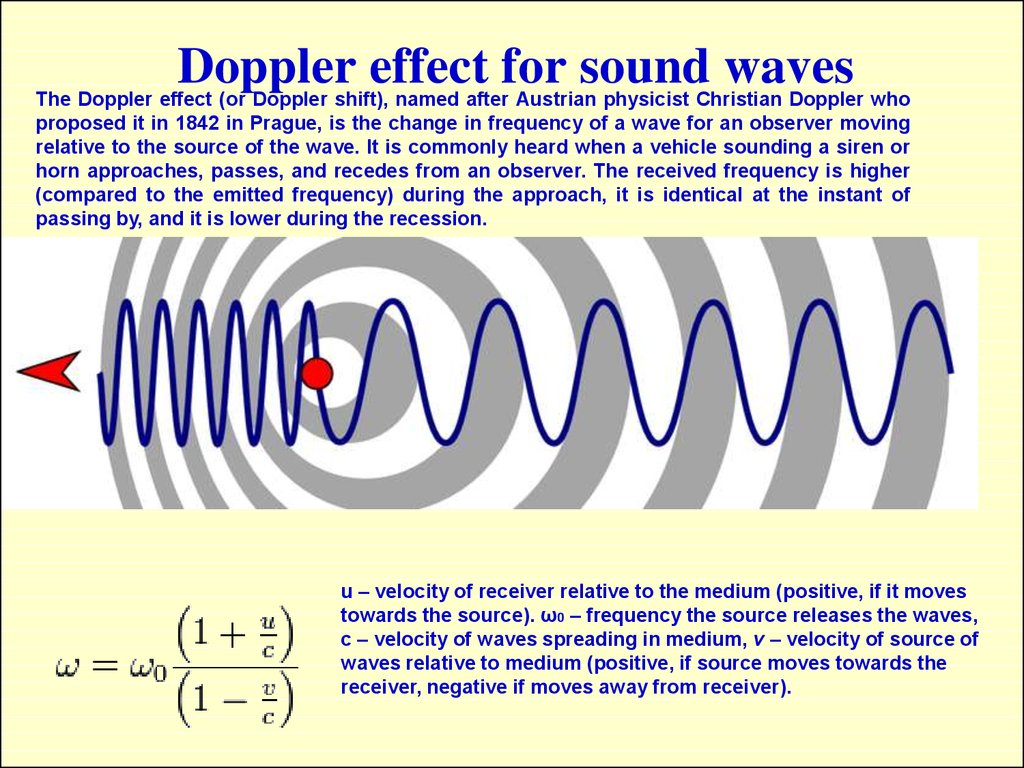
Where the relative velocity v s is positive if the source is approaching and negative if receding. In terms of the usual relativity symbols, this becomes Derivationįrom the Doppler shifted wavelength, the observed frequency is The fractional wavelength change is defined as the z parameter for characterizing red shifts: For these purposes it is more convenient to define a receding velocity as positive in the wavelength relationship: To relate this to the source frequency, it must be expressed in terms of by using the time dilation expressionįor purposes of determining recession speed of stars and galaxies with the Doppler effect by observation of the red shift of spectral lines, it is convenient to express the Doppler effect in terms of the shift in wavelength compared to the source wavelength. Where all quantities here are measured in the observer's frame. Just as in the case of sound waves, the wavelength in the direction of the source motion is shortened to For example, if you ride a train past a stationary warning.

The Doppler effect is observed with visible light and all other electromagnetic waves. Although less familiar, this effect is easily noticed for a stationary source and moving observer. Here v is the relative velocity of source and observer and v is considered positive when the source is approaching. For light and other electromagnetic waves, the relationship must be modified to be consistent with the Lorentz transformation and the expression becomes

The Doppler effect or the Doppler shift explain the changes of frequency of any sound or light wave which is. The Doppler effect is a very important phenomenon in various scientific fields which contain planetary science.
#DOPPLER EFFECT EXAMPLE PLUS#
Where the plus sign is taken for waves traveling away from the observer. When an ambulance crosses you with its siren blaring is a common example of the Doppler Effect. The normal Doppler shift for waves such as sound which move with velocities v much less than c is given by the expression The same thing happens in case (c).Relativistic Doppler Effect Relativistic Doppler Shift Similarly, the observer on the left receives a longer wavelength, and hence he hears a lower frequency. Because the observer on the right in case (b) receives a shorter wavelength, the frequency she receives must be higher. Thus, f multiplied by \(\lambda\) is a constant. The sound moves in a medium and has the same speed v in that medium whether the source is moving or not. We know that wavelength and frequency are related by v = f\(\lambda\), where v is the fixed speed of sound. Motion away from the source decreases frequency as the observer on the left passes through fewer wave crests than he would if stationary. Motion toward the source increases frequency as the observer on the right passes through more wave crests than she would if stationary. (c) The same effect is produced when the observers move relative to the source. The Doppler effect causes a wave to be received with a frequency different from the one with which it is emitted as a result of the motion of the emitter. The opposite is true for the observer on the left, where the wavelength is increased and the frequency is reduced. The wavelength is reduced, and consequently, the frequency is increased in the direction of motion, so that the observer on the right hears a higher-pitched sound. (b) Sounds emitted by a source moving to the right spread out from the points at which they were emitted. (a) When the source, observers, and air are stationary, the wavelength and frequency are the same in all directions and to all observers. \):- Sounds emitted by a source spread out in spherical waves.


 0 kommentar(er)
0 kommentar(er)
